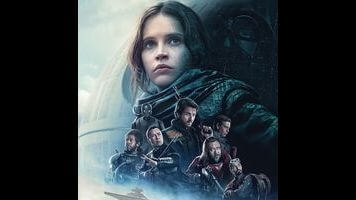Rogue One is an adventure to Star Wars’ dark side

Rogue One, a new standalone Star Wars film that ends around the point where the original movie began, doesn’t exactly subvert the light-and-dark mythos of that nearly 40-year-old multimedia franchise, but it does find the fatalism buried in its space-opera heroics. It has undeniable weaknesses: an underwritten protagonist, a generic villain, a shortage of interesting personalities. (No knock against the large cast, which is mostly very good, but underused.) But in many other respects, it is a better film than last year’s Star Wars: The Force Awakens: leaner, darker, with a distinct visual style and an actual ending that feels like a denial of blockbuster expectations simply because it shows basic narrative integrity. Returning to the movie influences and more limited color palette of A New Hope, director Gareth Edwards (Godzilla) has created the rare Star Wars property that can be appreciated as a film. And it is about as violent and downbeat as Star Wars gets on the big screen—more downbeat than The Empire Strikes Back, in fact.
The irony is that it is also so slavish to George Lucas’ initial conception of the series that it could almost be called an official fan film, dealing as it does with the backstory of a minor plot point from A New Hope: the Rebel Alliance’s theft of the plans for the Galactic Empire’s Death Star super-weapon. This dwarf-planet-size orb of gray metallic death has been destroyed twice in the Star Wars movies—three times if you count The Force Awakens’ Starkiller Base, which is just like the Death Star, only much bigger and more boring. Yet Star Wars has resisted using this potent image of looming malevolence as a metaphor. This is part of what has made the films so indelible, but it is also their major limiting factor: The good guys represent good, the bad guys represent evil. Rogue One doesn’t rectify this. What it does is recognize that the original Star Wars was a work of pastiche. In lieu of another hero’s journey, it presents a motley crew on a desperate mission.
Felicity Jones plays the lead role of Jyn Erso, a thief who is broken out of a prison camp by the Rebel Alliance and led to believe that she is being sent to rescue her father (Mads Mikkelsen), one of the architects of the Empire’s secret death machine. The truth is that the Alliance wants him killed. The task falls upon the Rebel intelligence officer Cassian Andor (Diego Luna), who travels as Jyn’s handler and pilot, accompanied by K-2SO (Alan Tudyk), a reprogrammed enemy droid who provides droll comic relief. Eventually, they are joined by the Imperial defector Bodhi (Riz Ahmed), the blind monk Chirrut (Donnie Yen), his heavily armed and armored buddy Baze (Jiang Wen), and, later, by a squad of grizzled Rebel soldiers. Rogue One—which takes its title from the call sign of their spacecraft—recognizes these men as lost souls. Some are atoning for misdeeds; others, like Chirrut and Baze, simply have nowhere left to go.
The thing the film has down cold from the start is a look and a sense of mass and scale that seemed to elude J.J. Abrams, the director and co-writer of The Force Awakens: the Death Star eclipsing a sun at noon, a flotilla of small Rebel vessels crashing into the bow of an Imperial Star Destroyer as it pops out of hyperspace, toppled statues lying half-buried in sand. The Star Wars world is large, and the events of Rogue One play out in its cracks and shadows—very literally. Presented without the films’ customary opening crawl or John Williams fanfare, it is Star Wars in a minor key. Its alien landscapes seem more forbidding. The desert planet Jedha resembles Afghanistan crossed with Tibet. Other worlds bring to mind the glacial terrain of Iceland or the island battlegrounds of the Pacific theater of World War II.

 Keep scrolling for more great stories from A.V. Club.
Keep scrolling for more great stories from A.V. Club.